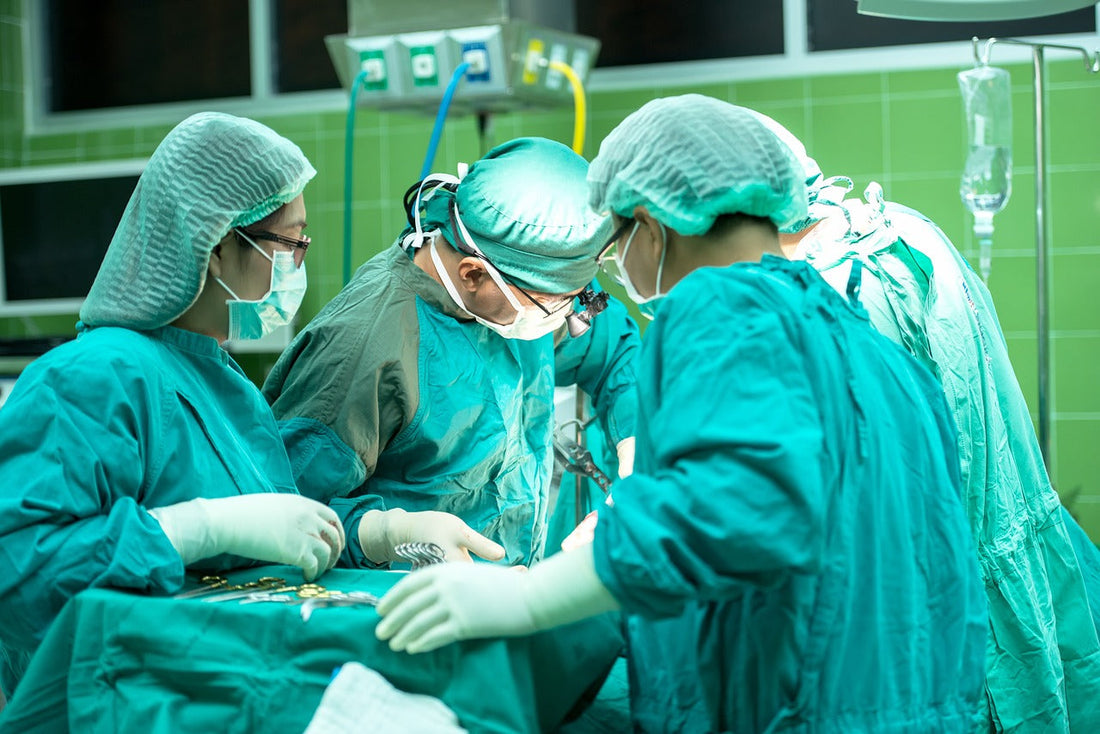
Top 5 Advancements in the Field of Surgical Procedures
Share

Introduction
Surgical procedures are essential components of modern medicine, used to treat a wide range of health conditions. From repairing damaged organs to removing harmful tissues, surgeries have become critical in improving patients' quality of life. With the rise of chronic diseases such as cardiovascular diseases, cancer, and obesity, the demand for surgical interventions is increasing globally. Technological advancements in surgical techniques and medical devices, coupled with rising awareness among patients, are driving the growth of the surgical procedures market.
For investors, the rapid growth and innovation within the surgical sector present significant opportunities. In this article, we highlight the top five advancements in surgical procedures that are reshaping the future of healthcare and offering promising returns for investors.
1. Robotic Surgery
Robotic surgery has become one of the most exciting innovations in the surgical field. This technology involves using robotic arms controlled by surgeons via a computer console to perform complex procedures. The robotic systems offer a high-definition, three-dimensional view of the surgical area, improving precision and control. The benefits include smaller incisions, reduced blood loss, less pain, and shorter recovery times, which enhance patient outcomes and hospital efficiency.
Notable hospitals like Medicana Atasehir Clinic and St. Zdislava Centre are already offering robotic surgery to improve patient care. The widespread adoption of robotic systems, such as the Da Vinci system, continues to grow, signaling a massive shift towards minimally invasive surgeries. As a result, the market for robotic surgery devices is expanding rapidly, creating lucrative investment opportunities in both medical technology companies and healthcare providers offering these services.
2. Telesurgery
Telesurgery, or remote surgery, leverages robotic technology and high-speed internet connections to enable surgeons to perform operations from remote locations. This breakthrough technology allows surgeries to be performed in underserved or emergency areas, overcoming geographical limitations and expanding access to quality care.
Telesurgery has the potential to revolutionize healthcare, especially in regions with limited access to skilled surgeons. It could reduce the burden on overworked hospitals and offer patients better outcomes, regardless of location. For investors, companies developing telesurgery systems are primed for rapid growth, offering new avenues in healthcare accessibility and surgical care delivery.
3. AI-Based Surgery
Artificial Intelligence (AI) is making a significant impact on surgical precision. AI-based surgery combines robotic systems with AI technology to assist surgeons, allowing them to perform complex movements with greater dexterity and accuracy. This is particularly valuable in minimally invasive procedures like laparoscopic surgery and prostate surgeries.
AI in surgery reduces human error, accelerates recovery times, and minimizes patient discomfort. With AI's ability to improve surgical outcomes and provide more consistent results, the demand for AI-assisted surgical solutions is growing rapidly. AI-based surgery offers investors an opportunity to tap into the booming AI healthcare sector, where advancements in robotics, machine learning, and computer vision are driving transformation.
4. The Multi-Angle Rear-Viewing Endoscopic Tool (MARVEL)
The MARVEL tool is a cutting-edge device designed to enhance visualization during endoscopic procedures. It uses a series of mirrors to provide a 360-degree view of the surgical area, making it possible to navigate challenging anatomical areas more effectively. This breakthrough is particularly beneficial in procedures where visibility is typically limited.
By improving the accuracy of endoscopic procedures, the MARVEL device reduces the risk of complications and enhances the success rates of surgeries. As a result, this innovation is gaining traction among healthcare providers and has the potential to drive the market for endoscopic devices. For investors, companies involved in developing and marketing advanced endoscopic tools stand to benefit from the growing demand for precision surgical solutions.
5. 3D Printing
3D printing is transforming the way surgeries are planned and executed. Surgeons can now create patient-specific models of organs, bones, and tissues based on medical imaging, allowing for more accurate and personalized surgeries. 3D printing is also used to produce custom prosthetics, implants, and surgical guides, ensuring a better fit and improved patient outcomes.
The ability to create personalized models and tools enables surgeons to rehearse surgeries before performing them, improving their accuracy. Moreover, 3D printing offers the potential to reduce surgery time, minimize errors, and enhance recovery. As 3D printing technology continues to evolve, its applications in medicine will expand, creating long-term investment opportunities in both healthcare and medical device sectors.
Conclusion
The surgical procedures market is on the brink of significant transformation, driven by rapid technological advancements. Robotic surgery, telesurgery, AI-based surgery, the MARVEL device, and 3D printing are reshaping the way surgeries are performed, improving outcomes, and expanding access to healthcare. For investors, these advancements represent a highly lucrative market, with promising opportunities in medical technology, healthcare services, and surgical device development.
As the demand for more efficient, accurate, and minimally invasive procedures rises, the surgical sector's growth potential is clear. With the right investments in these cutting-edge technologies, stakeholders stand to benefit from the continued innovation and expansion within this dynamic healthcare market. The future of surgery is bright, and those who invest early in these advancements will be well-positioned for success in the years to come.